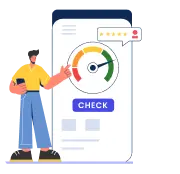A cess is an extra levy charged over and above an individual’s basic tax liability. It is levied on the tax collected rather than the taxpayer’s income. For example, if a tax of Rs. 60,000 is payable on Rs. 10,50,000, a cess of 4% would be levied on Rs. 60,000. This works out to Rs. 2,400. Health and Education cess is levied on net taxable Income, after taking into account various deductions and exemptions such as those under Section 80C. It is levied on all types of income such as salary, rent, profits of business and capital gains.
What is Cess
A cess is a tax that can only be used by the government for the purpose for which it is collected. It is collected for the welfare of a certain sector. This is the primary difference between a tax and cess as taxes can be used wherever needed. Moreover, cess is charged over and above the tax payable and is applicable on income tax at all income tax slabs.
For instance, the health and education cess applicable FY 2018-19 onwards can only be spent on its stated objective of meeting the health and education needs of Below Poverty Line (BPL) families. It cannot be used for any other purpose and if unspent, must be carried over for future spending on its designated objective. The Health and Education Cess cannot be allocated to State Governments and is spent exclusively by the Central Government.

Get FREE Credit Report from Multiple Credit Bureaus Check Now
What is Health and Education Cess
In previous financial years, there was a Secondary and Higher Education Cess of 3%. This was replaced by the Health and Education Cess in Budget 2018, thereby broadening its scope to both the health and education categories.
As stated above, health and education cess is calculated on the tax payable, is the same for everybody and has to be paid at all tax slabs. However, in case an individual’s tax liability is zero, no cess needs to be paid.
Health and Education Cess Rate
The current health and education cess rate for FY 2024-2025 (AY 2025-2026) is 4% over the tax payable. It is applicable on income tax at all slabs. Cess (health and education cess) stands in contrast with surcharge that is only applicable to incomes above Rs. 50 lakh. In respect of such incomes (Rs. 50 lakh and above), both surcharge and cess are applicable and both are levied on the basic tax payable rather than the underlying income.
How to Calculate Health and Education Cess
To understand how health and education cess is calculated on the income tax of an individual, consider the following example:
If the tax payable is Rs. 20 lakh on an income of Rs. 75 lakh, the surcharge would be 10% of Rs. 20 lakh and the cess would be 4% of Rs. 20 lakh. This works out to Rs. 2 lakh and Rs. 80,000 respectively taking the total tax to Rs. 20 lakh + Rs. 2 lakh + Rs. 80,000 = Rs. 22,80,000.
Know more on Income Tax Calculator
How is Health and Education Cess Used
The primary aim of collecting health and education cess by the government of India is to improve the healthcare and educational facilities in the deprived areas of semi-urban and rural India.
Some of the key areas where these funds are used by the government are:
- Raise the standard of primary and higher education in India, particularly in rural and semi-urban areas
- Run a mid-day meal scheme in schools, which has proven to be effective, particularly in rural areas by reducing the dropout rate in primary schools
- Increase the quality and access to education by offering seamless internet connectivity
- To provide digital and online connectivity to schools and colleges even in rural areas
- To provide funds for salaries of teachers and allied staff
- Create world-class infrastructure and opportunities by opening higher education institutes of national importance like IITs, AIIMS, IIMs across more states, etc.
In case the amount of health and education cess collected in a year remains unutilized for a financial year, it is carried forward to the next year under the same head.

Get FREE Credit Report from Multiple Credit Bureaus Check Now
FAQs
Q. Is the rate of health and education cess same under both tax regimes?
Ans. Yes, the rate of health and education cess is the same under both the old and new tax regimes.
Q. Who is liable for health and education cess?
Ans. Anybody who has a taxable income is liable to the health and education cess.
Q. Is health and education cess mandatory?
Ans. Yes, if you have a taxable income you are mandatorily required to pay health and education cess. However, in case your income falls under the non-taxable slab, you are not required to pay the cess amount.

